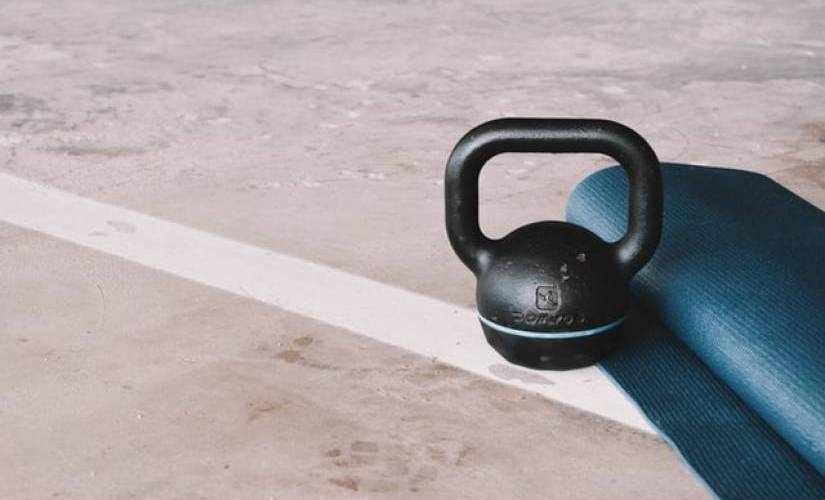How Artificial Intelligence Innovations are Used in the Fitness Industry
How Artificial Intelligence Innovations are Used in the Fitness Industry

It’s hard to find an industry that isn’t in the process of being transformed by digital technologies, and the world of fitness is no exception. While people have been working out or exercising for decades, if not centuries, how they’re doing so is rapidly evolving. Here is how artificial intelligence innovations are used in the fitness industry.
Technologies like digital wearables enhanced with artificial intelligence are a natural fit for the fitness industry. Some of these products and solutions have already seen increasingly widespread adoption, while others are only beginning to penetrate consumer consciousness.
Finally, coming full circle into the field of fitness-related is AI. Advances in AI allow for more responsive, customizable, and immersive digital fitness assistants and helpers with each successive year.
AI-Based Personal Trainers
One aspect of fitness that has consistently brought people out to their local gym has been a lack of expertise. If you want a sustainable and effective workout routine, you need to consult with someone who knows what works and what doesn’t. And until recently, that means working with a trainer or other fitness professional.
Neural Networks and Trainers
But by harnessing the power of neural networks and AI, digital personal trainers can fill in for that role, tailoring and overseeing workouts from the comfort of users’ homes. The AI-based personal trainers use various AI algorithms to simulate or even surpass the know-how of a human trainer.
The AI-based personal trainers see a noticeable surge in popularity due to the global COVID-19 pandemic. As people continue to deal with local lockdowns and are reluctant to spend more time away from home than needed, digital personal trainers fill a void when it comes to fitness guidance.
AI-based personal trainer offerings attack the concept in a variety of ways. Still, it’s worth taking a look at a couple in particular as representatives of some of the field’s possibilities.
Apps Leveraging AI Processes
The first we’ll look at is the Freeletics app, which leverages a series of AI processes to create a customized workout and then maintains and modifies it to optimize user preferences and development.
The Freeletics app begins by collecting a small amount of personal data. It then cross-references with a massive database of other users and workouts to create a suggested starting routine.
The app will then track the user’s progress and accept feedback to continue to sculpt their workout to their satisfaction. Whether it be general fitness, targeting individual muscle groups or areas of the body, weight loss, or other fitness goals, Freeletics uses machine learning.
With machine learning, the user gives feedback that will zero in on a routine a user can stick with over the long term.
Other apps use human pose estimation that detects and analyzes human posture during physical activities.
Data Gathered Through Apps
The Zenia app gathers data through the mobile camera, which is angled to capture the user’s workout. Under the hood, Zenia uses a sequence of neural networks and a database of hundreds of thousands of captured yoga poses and images.
The database allows the app to identify correct and incorrect postures, giving feedback on users’ form and progress.
AI — Personal Coach
Creating AI personal coach apps, developers consult with fitness experts in creating the tools. This ensures that these apps have a foundation rooted in expertise within the fitness world and the power of machine learning.
The fusion of the two allows AI-based personal trainers to offer a compelling alternative to the gym, which an increasing number of fitness seekers prefer.
Smart Clothes and Wearables
An even more intimate application of AI tech in the realm of fitness is smart clothes and wearable devices. These products can monitor exercise or athletic endeavors in real-time through readings of biometric measures.
The motion-capture gathers data and offers feedback and guidance either after the fact or when the user is still engaged in their activity.
Smart Wearables
Asensei is a smart apparel developer offering a suite of shirts and pants capable of tracking users’ movements engaged in body movement exercises like lunges, squats, and similar routines.
The Asensei smart clothes use motion capture and AI technology to compare the user’s angles and range of motion to acceptable norms of exercise form and can correct users in real-time to create good exercise habits.
Sensoria offers a similar AI-based wearable system, this one specially tailored to jogging and running. The Sensoria platform gathers data from smart garments (whether Sensoria’s own or other IoT-enabled garments).
The data measures a range of motions and biometrics. This includes heart rate, rate of foot landing and cadence, and impact forces while running.
The Sensoria analysis not only offers suggestions for optimization and improvements for a workout routine but can monitor and spot potential injuries-in-waiting and identify weak points in the kinetic chain.
The Sensoria system is designed with an eye on both fitness and wellness for users engaged in an active lifestyle.
Wearables for Exercise Tech
Nadi is a smart clothes creator-focused specifically on yoga, using many of the same AI and body capture technologies to produce smart yoga pants.
These leggings connect wirelessly to an app for mobile devices, and the mobile app offers a yoga tutorial working through a predetermined routine.
Meanwhile, the leggings themselves utilize a series of gentle vibrations to offer guidance on which parts of the body should be focused on at each step of the routine.
Real-Time Data
These and other smart clothing and wearable manufacturers are starting to scratch the surface of the power AI has when it can be fed real-time data on granular body movements.
Analyzing and offering instruction at that level of precision allows for a greater level of control of a workout than we’ve ever seen before.
AI-Driven Diet Planning
Long before AI was a viable commercial technology, digital diet planning was a massive part of the fitness market.
Tracking calories and meals online and on mobile devices has been popular for more than a decade. With a profusion of competing apps and websites offering services of highly variable quality.
Limitations of the Users
The recurring problem or limitation of many of these solutions is the amount of work they ask the user to do and the expertise they expect from their users. AI has the potential to fix many of these issues.
AI Helps in the Specifics
One area where AI can help is in the easy identification of foods for meal logging.
Asking users to painstakingly enter each of their meals and snacks is far more time consuming than asking them to snap a simple photo.
And apps like Calorie Mama offer the ability to calculate the calories within a dish or meal through a picture.
If users can log their calories with a minimum effort, motivation to stick with a diet plan increases significantly.
Calories
Meanwhile, apps like FitGenie and Neutrino leverage AI-based analytics to tailor meal plans and caloric targets for individual users’ requirements.
By gathering user info up-front and as time goes on, these apps can tap into huge databases of foods, metabolic and physiognomic ranges.
All of the data measurements can chart fitness goals and create recommendations customized to an exacting standard.
Wellness and Fitness
As time goes on, we realize that wellness and fitness are often an intensely personal journey and that one size very much doesn’t fit all.
AI has the potential to discover what works for any given person, even if that diet or routine is significantly different than what works for anyone else.
The Diet Industry
For decades, the diet planning industry has been stunted by untapped promise, often delivering results to a small subset of people while failing the majority of users.
AI-based solutions may be the key that unlocks a wider-spread success rate.

Artificial Intelligence innovations are transforming nearly every industry, and market in existence to one extent or another, or else will be in the near future. It’s already starting to change the fitness industry and the way people exercise and take care of their bodies.
Conclusion
As we grapple with a world forever changed by the COVID-19 pandemic, the possibilities for major changes in consumer behavior are as great as they’ve ever been.
Whether it be smart apparel, AI personal trainers, or AI-driven diet planners, AI technology is making fast inroads in the fitness industry.
Integrating and expanding on the current offerings is the surest route to becoming a leader in the near future.
The post How Artificial Intelligence Innovations are Used in the Fitness Industry appeared first on ReadWrite.
(32)


